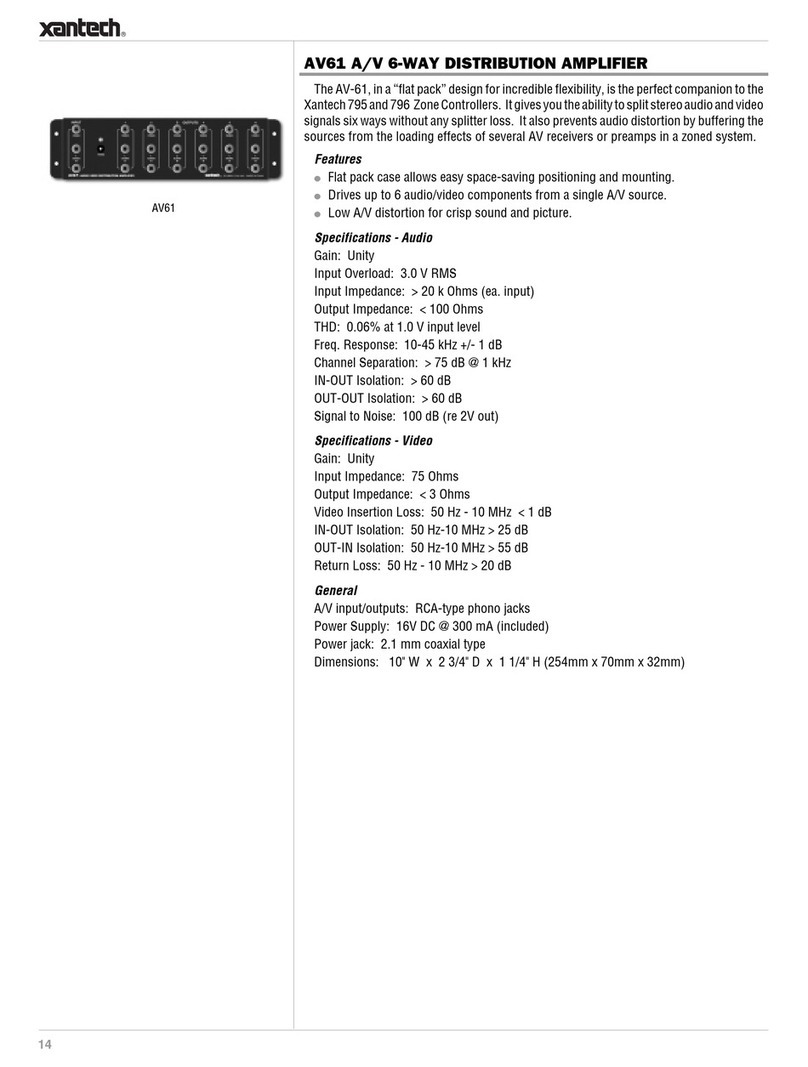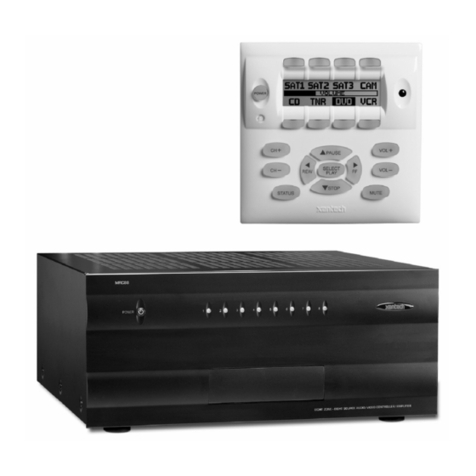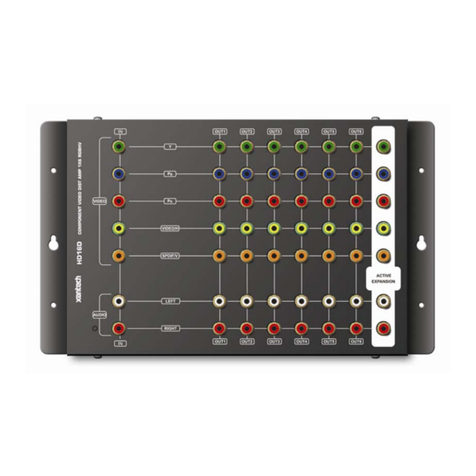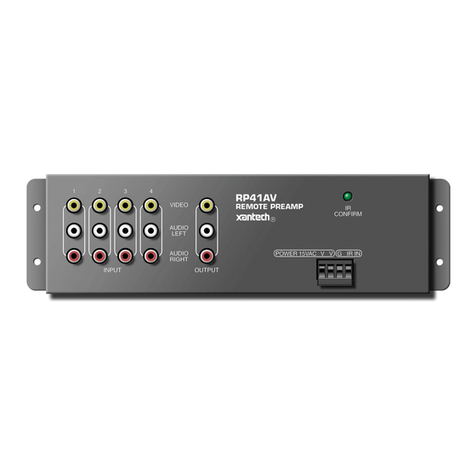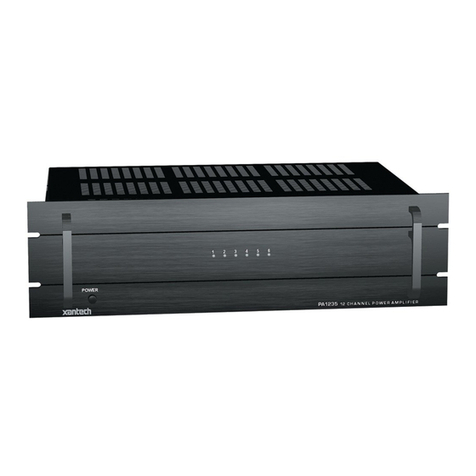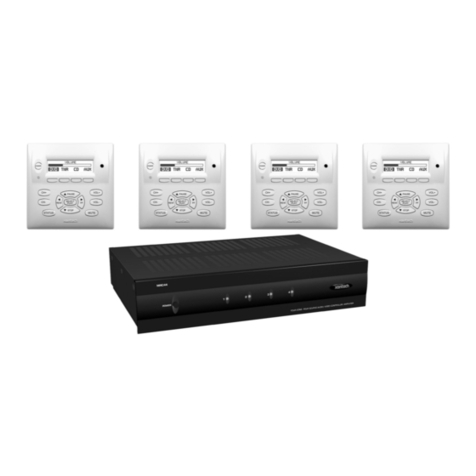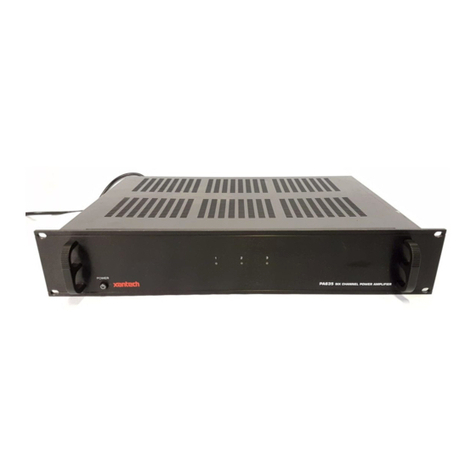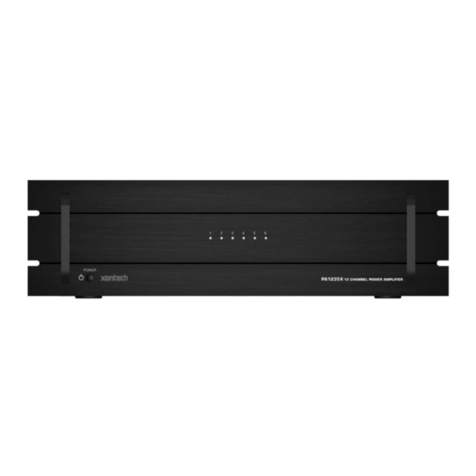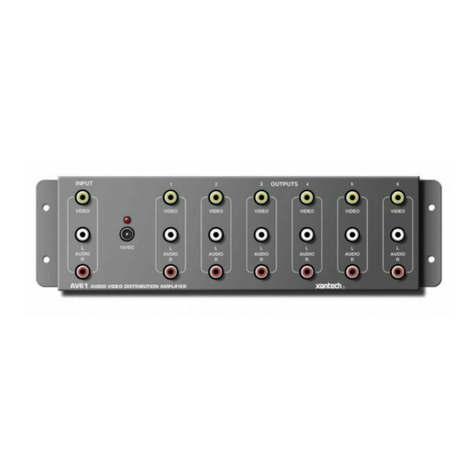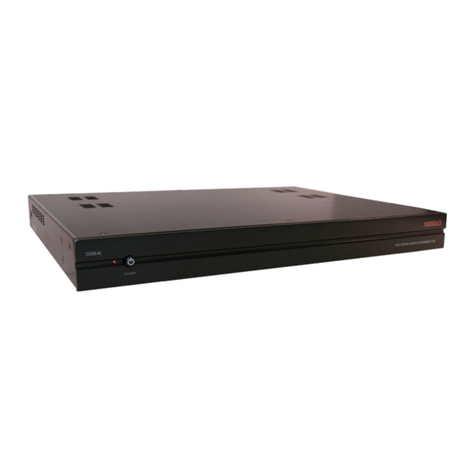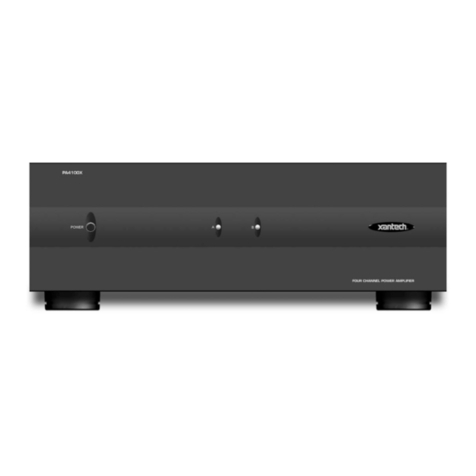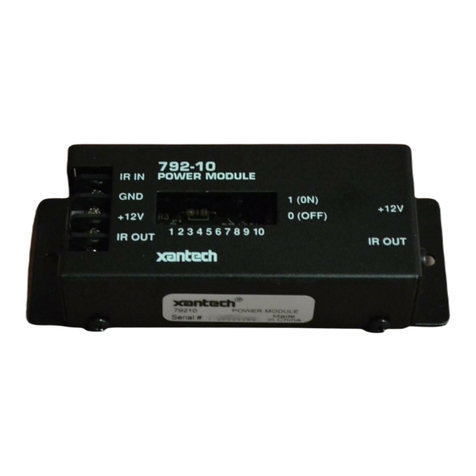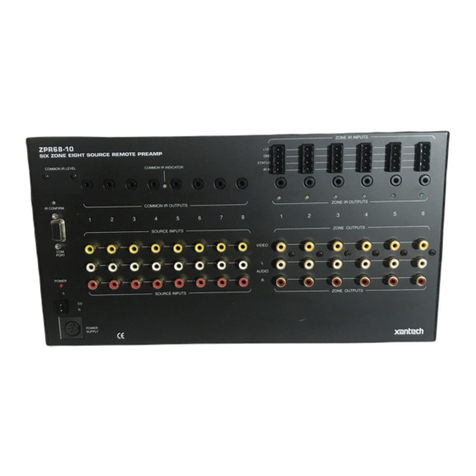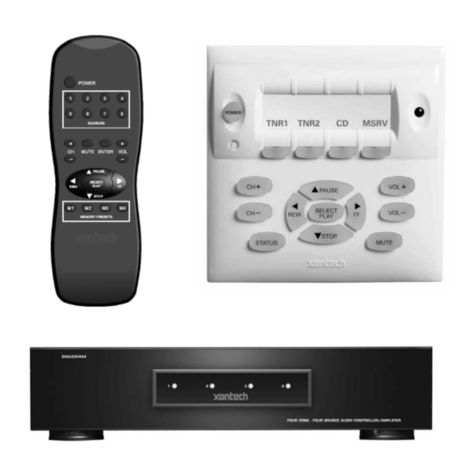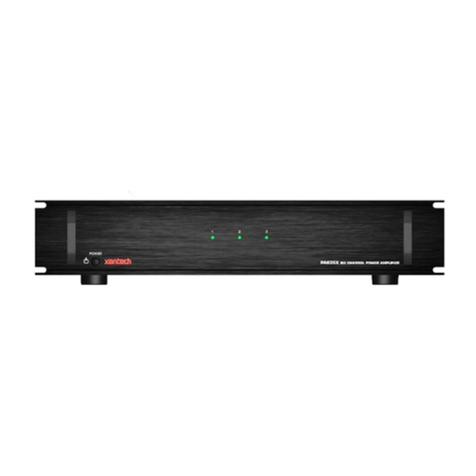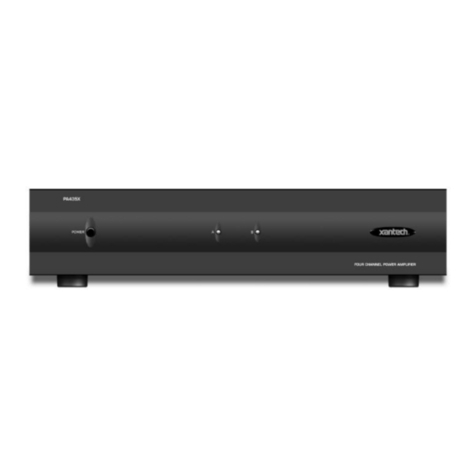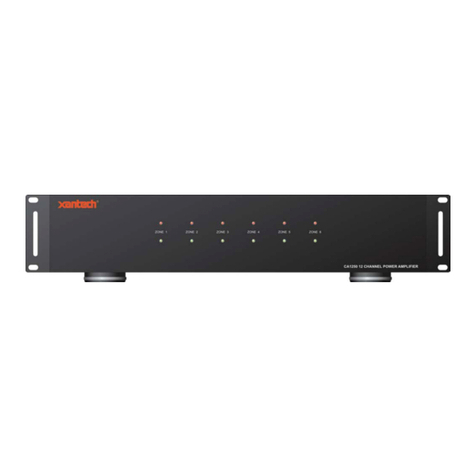
9
Amplifiers & Preamplifiers
PROBLEM
1. Power Indicator does not light – no sound.
2. No sound from CH2, CH4 or CH6 when
stereo operation is desired.
3. Sound cuts in and out every 3 to 5 seconds.
4. PA640 does not turn OFF when REMOTE
input voltage goes to 0 Volts.
5. PA640 becomes very warm, shuts OFF, but
does not come back ON automatically.
PROBABLE CAUSE AND SOLUTION
• Check line cord for good contact in a live AC outlet.
• If REMOTE ON/OFF jack is used, be sure applied voltage is
between +4V and +30V DC with proper polarity. See Fig. 8.
• BRIDGED/STEREO switch is incorrectly set to BRIDGED
position. Set to STEREO position. See Fig. 6.
• Speaker load impedance is less than 2-Ohms for Stereo mode or
less than 4-Ohms for Bridged mode. Make changes in speakers
as necessary to obtain higher impedance.
• Be sure that the POWER switch (item 8, fig. 3) is set to the
MANUAL OFF (REMOTE ON/OFF) position.
• Set POWER switch (item 8, Fig. 3) to MANUAL OFF (OUT)
position for 15 seconds, then back ON. If REMOTE ON/OFF
jack is used, unplug for 15 seconds, then replug.
REMOTE
ON/OFF
POWER
4V to 30V DC Adapter
plugged into a Switched
AC Outlet on Preamplifier
Preamplifier
3.5mm Plug.
Tip
must
be
positive (+).
PA640
SYLMAR, CA MADE IN U.S.A.
PA640
SIX CHANNEL POWER AMPLIFIER
®
Fig. 8 REMOTE ON/OFF Jack Connections
INSTALLATION (cont'd)
Connecting the REMOTE ON/OFF Jack
As mentioned under "PA640 PANEL DESCRIPTIONS", the REMOTE ON/OFF jack allows the power to
thePA640tobeturnedONandOFFbyaremotelyappliedDCVoltage. Figs.8and9aretypicalapplications
using this feature.
Fig. 8 illustrates how a PA640 can be switched ON and OFF via the switched AC outlet on the rear of a
preamplifier. WhenthepreamplifierPower Switch is switched ON, power is applied to the DC adapter which
in turn applies 4V to 30V DC to the PA640, switching it ON. Similarly, when the preamplifier is switched
OFF, the DC voltage to the PA640 is removed, turning it OFF.
Fig. 9 shows two PA640's in a typical multi-room system with a Xantech ZPR68 6-zone preamp. In this
case, the common +12V CO (control output) from the ZPR68 is used to remotely turn the PA640 ON/OFF.
When any one of the zones is turned on, the common +12V CO goes high, turning each of the PA640's ON.
Similarly, when the last zone is turned OFF, the +12V CO drops to 0V and turns the PA640's OFF.
TROUBLE SHOOTING
If you encounter a problem, please review the items in the following list. Be sure, in addition, to check other
system components, such as preamplifiers, CD players, speakers, speaker wiring, etc., that may be at fault.
PA640
